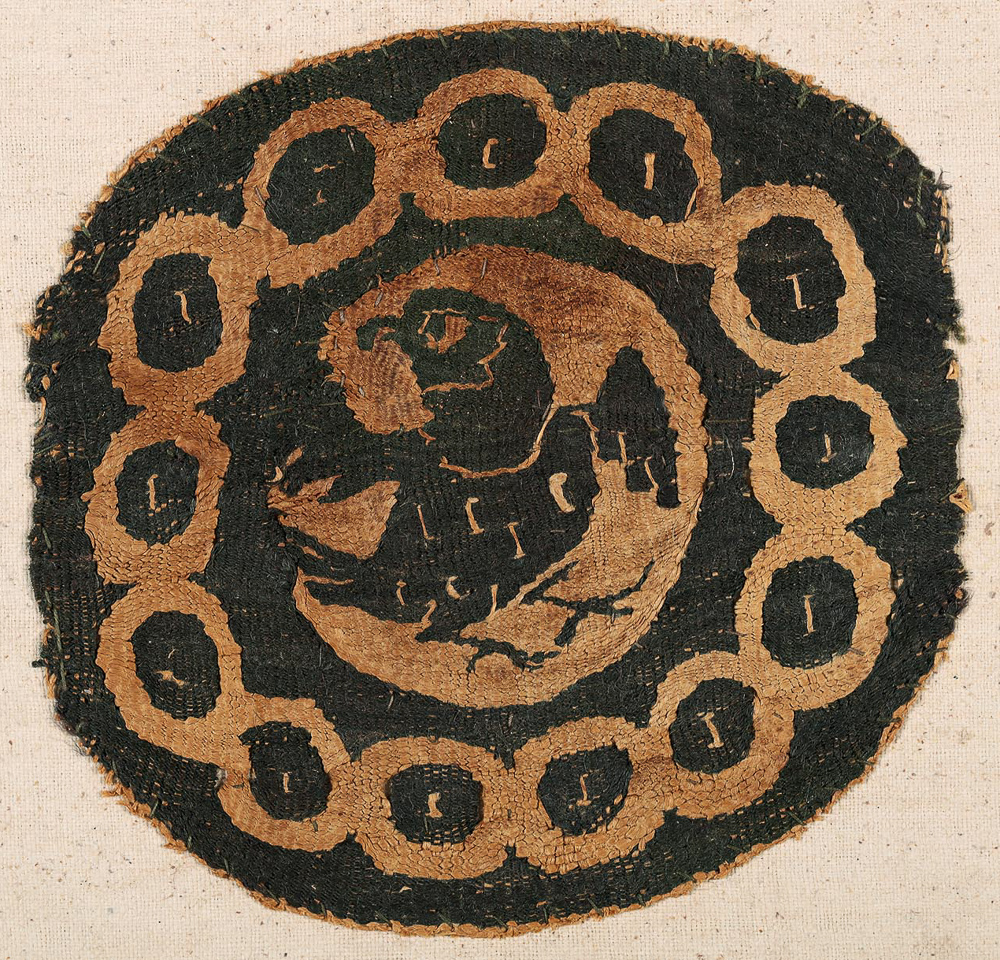The eagle is presented in three-quarter view, wings outspread and head turned. The outer band has a stylised interlaced frieze.
Origin:
Egypt
Date:
5th - 6th century
Material:
Linen and wool
Dimensions:
Warp: 12 cm, weft: 13 cm
Comparisons:
State Hermitage Museum inv. DV 11603.
Coll. J-F Bouvier, inv. S 3.
Louvre, inv. X 4139.
Fondazione Antonio Ratti, inv. 37 (eaglet).
Musée d'Art et d'Histoire, Genève, inv. AD 7860: ovolo enrichment.
The iconography of the eagle was inherited from classical Roman art.
Provenance:
Collection Coptic textiles Fill-Trevisiol: donation
Location:
Musée royal de Mariemont
Inwoven tapestry, details in flying thread
I. No ground weave
II. Tapestry areas
Warp:
natural-coloured linen S
Weft:
purple wool S: 40/cm; natural-coloured linen S: 20-24/cm
Weave:
extended tabby 2/2
Ribs per cm:
9
Special techniques:
slit tapestry, eccentric weft, flying thread brocading for details only
